If you have an African Violet that’s not looking its best, don’t despair. It’s possible to revive it with a little bit of effort. Here are 8 signs that your African Violet is dying and what you can do to revive it.
How Do I Know If My African Violet is Dying?
There are a few things you can do to revive your plant. If you’re noticing that your African violet’s leaves are wilting, its flowers are drooping, or the plant is overall looking less healthy than it used to, don’t despair!
If it is, water your plant and make sure the pot has drainage holes to allow excess water to escape. First, check to see if the soil is dry.
Move it to a spot that gets indirect sunlight and see if that makes a difference. If the soil is moist but your plant is still wilting, it may be getting too much sun.
If you’ve tried both of these things and your plant is still not looking its best, there are a few other things to try. Trim off any dead leaves or flowers, and make sure the pot is not too small for the plant – a cramped pot can stunt growth.
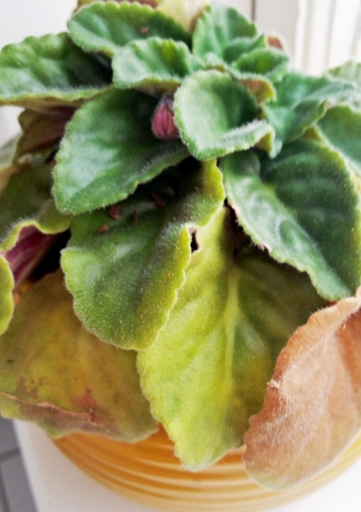
Finally, if you’re still having trouble reviving your African violet, it’s possible that it’s just not getting enough nutrients. Try fertilizing it with a plant food designed for African violets, and see if that makes a difference.
Leaves Turning Yellow
African violets need 12-14 hours of bright, indirect light every day in order to stay healthy. If your plant is not getting enough light, move it to a brighter spot. If your African violet’s leaves are turning yellow, it’s a sign that the plant is not getting enough light.
Yellow leaves can also be a sign of too much water. Overwatering can cause the leaves to turn yellow and drop off. African violets need to be watered when the soil is dry to the touch, but not more than that.
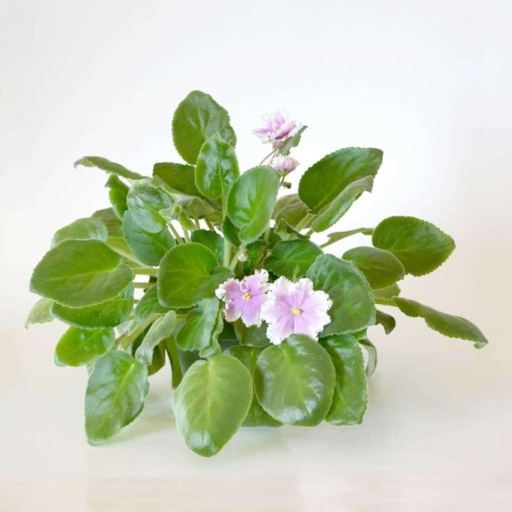
First, check the light and water levels and make sure they are where they should be. If you think your African violet is dying, there are a few things you can do to revive it. If the plant is still not looking good, you can try repotting it in fresh soil.
Drooping Leaves
If you notice your African violet’s leaves drooping, it’s a sign that the plant is not getting enough water. If the soil is too wet, however, that can also cause drooping leaves, so be sure to check for drainage issues. If the leaves are still drooping after you’ve adjusted the watering, it could be a sign of a nutrient deficiency. Check the soil to see if it needs to be fertilized, and if so, add a fertilizer designed for African violets. Check the soil to see if it’s dry, and if so, water the plant.
Leaf Tips and Edges Turning Brown
If you see this happening, you should immediately stop watering your plant and let it dry out. One of the most common problems with African violets is that their leaves start to turn brown at the tips and edges. You can also try trimming the brown leaves off, but be careful not to damage the plant. This is usually caused by too much water, which can cause the leaves to rot.

And third, give it some extra light. If your African violet is dying, there are a few things you can do to revive it. Second, try trimming off the brown leaves. First, make sure you’re not overwatering it. If you do all of these things, your plant should start to recover.
Stem and Crown Rot
Stem and crown rot is a common problem with African violets. The cause is usually a fungal infection, but can also be due to over-watering or poor drainage. The symptoms include yellowing leaves, wilting, and browning of the stem and crown.

If the plant is severely affected, it may need to be replaced. Then, water the plant with a fungicide solution. If the plant is still healthy, it should recover within a few weeks. To treat stem and crown rot, first remove any affected leaves and stems.
Droopy Blooms and Loss of Flower
The leaves may also start to yellow and the plant will become less vigorous. If you notice your African violet’s blooms drooping, it’s a sign that the plant is not getting enough water. If you don’t take action to revive your African violet, it will eventually die.
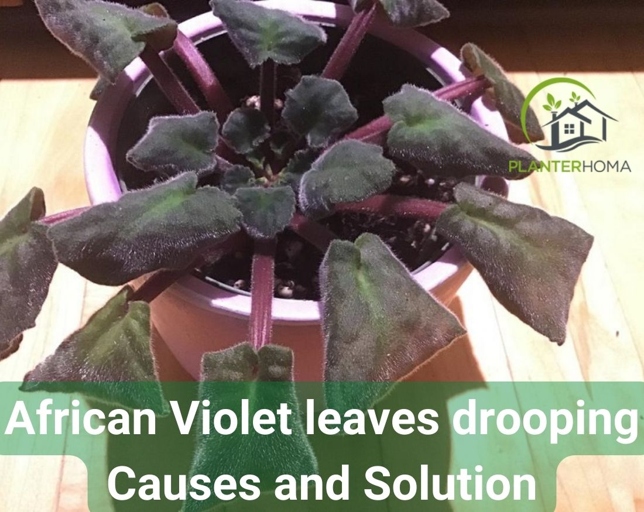
To revive your African violet, water it thoroughly and then place it in a location where it will receive bright, indirect light. With proper care, your African violet should soon start to bloom again. You may also need to fertilize your plant to give it a boost of nutrients.
White/Bleached Blooms and Foliage
However, there are some things you can do to revive it. If you notice that your African violet blooms and foliage are looking a little bit pale, it could be a sign that the plant is dying.
In this case, you will need to let the soil dry out before watering again. If it is dry, water the plant immediately. One of the first things you should do is check the soil. If the soil is too wet, however, it could be the reason the blooms and foliage are looking pale.
Move the plant to a spot where it will get more light and see if that makes a difference. It is also important to make sure that your plant is getting enough light. If it is not, the blooms and foliage will start to look pale.
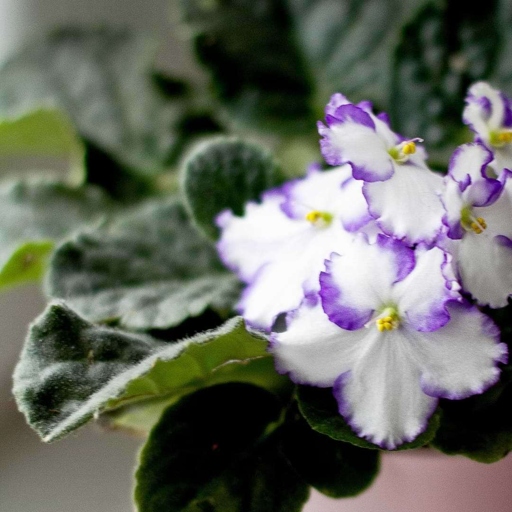
If you have tried these things and the plant is still not looking any better, it may be time to give up and start over with a new African violet.
Brown Spots on Foliage
If you notice brown spots on the foliage of your African violet, it is a sign that the plant is dying. There are several reasons why this may happen, including too much sun, too much water, or not enough nutrients. If you catch the problem early, you may be able to revive your plant by making some adjustments to its care.
Allow the soil to dry out completely between waterings and see if the spots start to shrink. If the brown spots are small and isolated, it may just be a case of too much sun. Move your plant to a spot that gets less light and see if the spots start to fade. If the brown spots are large and spread out, it is likely that your plant is getting too much water.

If your plant is not getting enough nutrients, the leaves may turn yellow or brown and eventually drop off. Feed your plant with a balanced fertilizer and see if the leaves start to green up. If you are not sure what is causing the brown spots on your plant, it is best to consult a professional.
Stunted Growth
When it comes to African violets, stunted growth is one of the most common problems that can occur. If your African violet is not getting enough light, it will start to stretch out and become leggy in an attempt to reach the light source. There are a number of reasons why this might happen, but the most common cause is simply that the plant is not getting enough light. This can eventually lead to the plant becoming stunted and stunted growth.
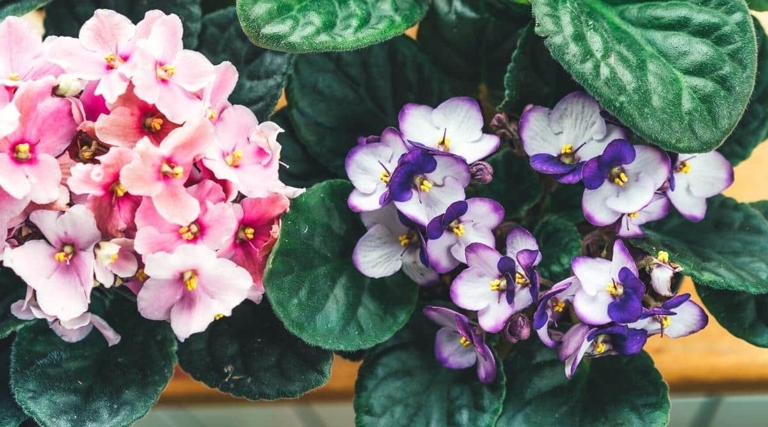
Make sure that the plant is getting at least 12 hours of light per day, and if possible, try to move it to a brighter spot. If you can’t increase the light, you might need to give the plant some extra fertilizer to help it along. If you think that your African violet might be suffering from stunted growth, the first thing you should do is check the light situation.
In these cases, it’s best to consult with a professional to get your plant back on track. Once you’ve addressed the light issue, you should start to see some new growth within a few weeks. If not, it’s possible that there is another problem, such as too much water or not enough nutrients.
Causes and Solutions for a Dying African Violet
However, African violets can sometimes die if they are not cared for properly. There are a few different reasons why an African violet might die, and there are also a few different solutions that can be used to revive it. African violets are a type of houseplant that is known for its beautiful flowers.
Another common reason for an African violet to die is because it is not getting enough water. Overwatering can also cause problems, so it is important to make sure that the soil is not too wet. African violets need to be watered about once a week, and the soil should be allowed to dry out in between waterings. African violets need to be in a place where they will get bright, indirect light. One of the most common reasons why an African violet might die is because it is not getting enough light. If they are in a place that is too dark, they will not bloom and their leaves will start to turn yellow.

Another solution is to water the plant more frequently. If an African violet is dying, there are a few things that can be done to revive it. If the soil is too wet, the plant can be allowed to dry out for a few days before being watered again. One solution is to move the plant to a brighter location.
[1] African Violet Crown Rot
The leaves will then start to drop off, and the stem will become mushy. If you see any of these signs, it’s important to take action immediately. This occurs when the leaves at the base of the plant start to turn yellow and then brown. When it comes to African violets, crown rot is one of the most common problems.

Next, water your plant with a mixture of one part bleach to ten parts water. First, remove any affected leaves and stems. If you do all of these things, your plant should start to recover within a few days. Finally, make sure to give your plant plenty of light and air circulation. There are a few things you can do to revive your plant. This will help to kill any bacteria or fungi that may be causing the problem.
Phytophthora Crown Rot
One of the most common problems is Phytophthora crown rot. They are relatively easy to care for, and they bloom frequently. However, even the most experienced growers can run into problems from time to time. When it comes to houseplants, African violets are some of the most popular.

The stem may also turn brown or black. These spots will eventually spread, and the leaves will start to wilt and die. It thrives in wet, humid conditions, and it can quickly kill an African violet. The first signs of Phytophthora crown rot are brown or black spots on the leaves. This disease is caused by a water mold called Phytophthora parasitica.
If you suspect that your African violet has Phytophthora crown rot, the best thing to do is to remove the affected parts of the plant. If the stem is affected, you may be able to save the plant by cutting off the affected portion and replanting it. Cut off any leaves that have brown or black spots, and dispose of them.
You should also avoid watering from overhead, as this can spread the disease. If possible, try to water your plants from the bottom, using a tray or saucer. Once you have removed the affected parts of the plant, it is important to take steps to prevent the disease from spreading. Be sure to sterilize your pruning tools before using them on other plants.
With proper care, African violets can be long-lived houseplants. However, they are susceptible to a number of diseases, including Phytophthora crown rot. If you suspect that your plant has this disease, take action immediately to remove the affected parts and prevent the disease from spreading.
Pythium Crown Rot
Symptoms of pythium crown rot include yellowing leaves, wilting, and stunted growth. This can lead to the death of the plant. Pythium crown rot is a serious problem for African violets. The disease is caused by a fungus that attacks the plant’s roots, causing them to rot. The best way to prevent the disease is to water your plants from the bottom, using a tray or saucer. If you suspect your plant has pythium crown rot, you should remove it from the pot and dispose of it.
Rhizoctonia Crown Rot
Rhizoctonia Crown Rot is a serious problem for African violets. This can cause the leaves to turn yellow and fall off, the stem to rot, and the plant to die. The disease is caused by a fungus that attacks the roots and crown of the plant.
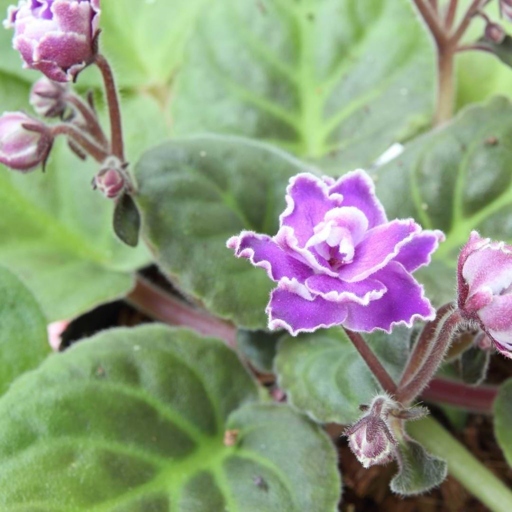
Second, water them from the bottom up so that the water does not touch the leaves. There are a few things you can do to prevent this disease from happening. Finally, if you see any signs of the disease, remove the affected leaves and stems immediately. First, make sure you plant your African violets in well-draining soil.
With some care and attention, your African violet can recover and continue to thrive. You can try to save it by carefully removing the affected parts of the plant and treating the remaining healthy parts with a fungicide. If your African violet does get Rhizoctonia Crown Rot, there is still hope.
Treatment and Management of African Violet Crown Rot
Crown rot is a fungal disease that affects the base of the plant, where the leaves meet the stem. The plant may also produce small, dark brown spots on the leaves. The leaves turn yellow and wilt, and the stem may become soft and mushy. African violets are a beautiful and popular houseplant, but they are susceptible to a number of problems, including crown rot.

If the plant is still healthy, you can try to revive it by repotting it in fresh potting mix and giving it more light. Remove any affected leaves or stems, and dispose of them in the trash. Crown rot is caused by overwatering, so the first step in treating it is to allow the plant to dry out completely. If the plant is too far gone, you may need to start over with a new one.
Allow the water to drain completely, and don’t let the plant sit in water. To prevent crown rot, water African violets only when the soil is dry to the touch. Be sure to use a well-draining potting mix, and don’t overcrowd the pot. If you see any signs of crown rot, act quickly to remove the affected leaves or stems and give the plant a chance to dry out.
[2] African Violet Root Rot
Here are some signs to look for that may indicate that your African Violet has root rot: The good news is that it is often possible to revive an African Violet that has been affected by root rot. African Violet Root Rot is a common problem for African Violet owners.
The leaves of the plant begin to turn yellow or brown and fall off. 1.
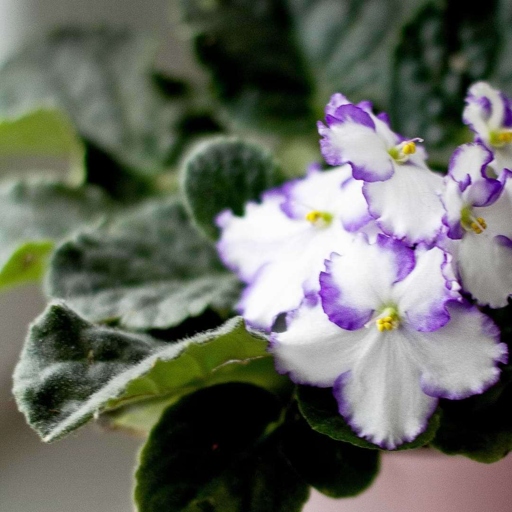
The stem of the plant becomes soft and mushy. 2.
The roots of the plant appear black or brown. 3.
4. The plant begins to wilt and look overall unhealthy.
The first step is to remove the affected plant from its pot and inspect the roots. If you notice any of these signs, it is important to take action immediately. If the roots are black or brown and mushy, they will need to be trimmed away. Once the affected roots have been removed, the plant can be replanted in fresh potting mix.
With proper care, an African Violet affected by root rot can often be revived and will continue to grow and bloom for many years.
Treatment and Control of African Violet Root Rot
There are several things you can do to treat and control it. African violet root rot is a serious problem that can quickly kill your plant.
First, make sure you are watering your plant properly. Allow the soil to dry out slightly between waterings. African violets need to be kept moist, but not soggy.

If they are black and mushy, you’ll need to cut them away. Remove the plant from its pot and inspect the roots. If you think your plant has root rot, you’ll need to take action quickly.
Once you’ve removed the affected roots, replant the African violet in fresh, sterile potting mix. Be sure to water it carefully and keep an eye on it for signs of further problems.
[3] Botrytis Blight
If you notice any of these 8 signs in your African Violet, it may be dying. With a little care and attention, you can revive your plant and enjoy its beauty for years to come. However, there is still hope!
The leaves are yellowing or browning. 1.
The leaves are wilting or drooping. 2.
3. The flowers are fewer and smaller than usual.
4. The plant is not growing as vigorously as it used to.
The stem is soft or mushy. 5.

6. The leaves are covered in a gray mold.
The plant is infested with pests. 7.
The plant is wilted and/or discolored. 8.
fourth, check for pests and treat the plant accordingly. Second, make sure the plant is getting enough light. If your plant is not getting enough light, move it to a brighter location. Finally, give the plant some TLC. If you notice any of these signs, don’t despair! First, check your watering schedule. African Violets need bright, indirect light to thrive. Third, fertilize your plant with a African Violet fertilizer. There are several things you can do to revive your plant. African Violets need to be kept moist, but not soggy. Water the plant thoroughly, then allow the soil to dry out slightly before watering again. With a little love and attention, your African Violet will be back to its old self in no time!
Dealing with Botrytis Blight in African Violets
Botrytis blight is a common problem for African violets. The best way to deal with it is to prevent it from happening in the first place. Here are some tips:
This will make them less susceptible to blight. 1. Keep your violets healthy and free from stress.
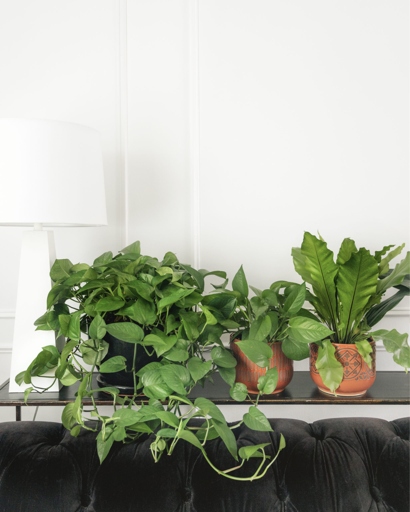
Remove any affected leaves and dispose of them. If you do see signs of blight, act quickly. 2.
Disinfect your tools and pots to prevent the spread of the disease. 3.
4. Be sure to follow the directions carefully. If the blight is widespread, you may need to use a fungicide.
With a little care, you can keep your African violets healthy and free from botrytis blight.
[4] Bacterial Blight
The symptoms include yellowing leaves, brown spots, and wilting. Be sure to empty the tray after each watering. Bacterial blight is a serious problem for African violets. If you notice any of the symptoms, isolate the affected plant and remove all the leaves. Disinfect your tools and pots before using them on other plants. The best way to prevent this disease is to water your plants from the bottom, using a tray or saucer.
Control Measures
African violets are a popular houseplant, but they can be finicky. If you notice your African violet dying, there are some things you can do to revive it.
First, check your watering schedule. African violets need to be kept moist, but not wet. Water them from the bottom, using a tray or saucer, and allow the water to soak up through the drainage holes in the pot.
African violets need bright, indirect light. If they are not getting enough sun, they will produce long, spindly stems. If they are getting too much sun, they will lose their leaves. Next, check the light.

If it is too hot, they will wilt. If it is too cold, they will go into shock and lose their leaves. African violets like it warm, around 70 degrees Fahrenheit. Finally, check the temperature.
If you take these steps and your African violet is still dying, it may be time to replant it. With a little care, you can get your African violet back to health in no time. Use fresh potting mix and a new pot, and be sure to water it well.
[5] Powdery Mildew
Powdery mildew can weaken the plant and make it more susceptible to other problems. If you think your African violet has powdery mildew, there are a few things you can do to revive it. Powdery mildew is one of the most common problems that can affect African violets. This fungal disease is characterized by a white, powdery growth on the leaves and stems of the plant.
First, try to improve the air circulation around the plant. Powdery mildew thrives in humid, stagnant air. If possible, move the plant to a spot with better air circulation. You can also try running a fan near the plant.

Water the plant more often, but be sure to allow the soil to dry out between waterings. African violets need to be kept moist, but not soggy. Next, increase the frequency of watering.
Finally, treat the plant with a fungicide. There are many products on the market that are effective against powdery mildew. Be sure to follow the directions on the label carefully.
Control Measures
If you notice your African violet is dying, there are some control measures you can take to revive it.
If the soil is too dry, water the plant and see if it perks up. First, check the soil moisture and make sure the plant is getting enough water. The soil should be moist, but not soggy.
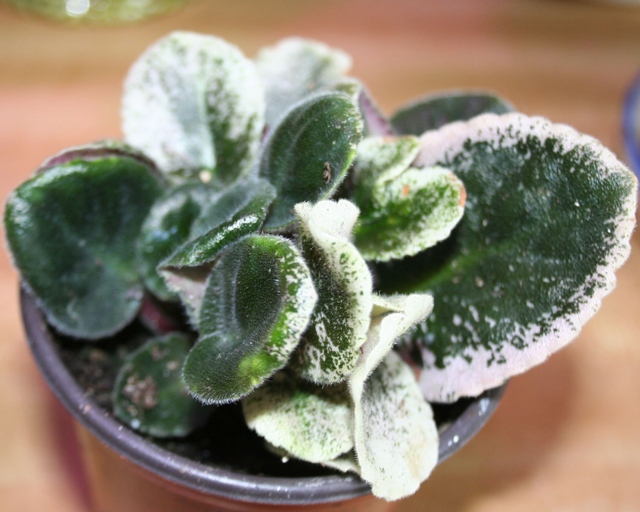
Move it to a spot where it will get the right amount of light. Next, check the light levels. African violets need bright, indirect light to thrive. If your plant is in too much or too little light, it will start to die.
Treat the plant with an insecticide or bring it to a pest control specialist. Finally, check for pests. If your plant is infested with pests, it will start to die.
If you take these control measures, you should be able to revive your African violet.
[6] African Violet Pests
If the soil is dry, water the plant. Finally, check the leaves. If you see any pests, remove them immediately. If your African Violet is dying, there are a few things you can do to revive it. Next, check the soil. First, check for pests. If the leaves are yellow or brown, trim them off. With a little care, you can revive your African Violet and keep it healthy for years to come.
Cyclamen Mites
If you suspect your plant has cyclamen mites, you can try to control them by watering the plant with a mixture of water and dish soap. Cyclamen mites are one of the most common pests of African violets. These tiny mites are barely visible to the naked eye and are most often found in the soil around the base of the plant. Cyclamen mites feed on the roots of the plant, which can cause the leaves to turn yellow and eventually die.
Mealybugs
Mealybugs are small, white, fuzzy pests that feast on plant sap. If you notice your African Violet is wilting, leaves are yellowing, or it just doesn’t seem to be growing as it should, check for mealybugs. They can quickly weaken and kill a plant if left unchecked.

Then, use a cotton swab or soft brush to gently remove the pests from the plant. You can also try using a commercial insecticide, but be sure to follow the directions carefully. To get rid of mealybugs, start by isolating the affected plant.
With a little care and attention, you can revive your African Violet and keep it healthy for years to come.
Aphids
Aphids can quickly multiply and infest an entire plant. Aphids are small, sap-sucking insects that can wreak havoc on African violets. Signs of an infestation include: These pests are often introduced to indoor plants on new leaves or flowers.
-Leaves that are yellow, wilted, or distorted
-Sticky honeydew on leaves or stems
-Ants crawling on the plant
-Aphids visible on the leaves or stems
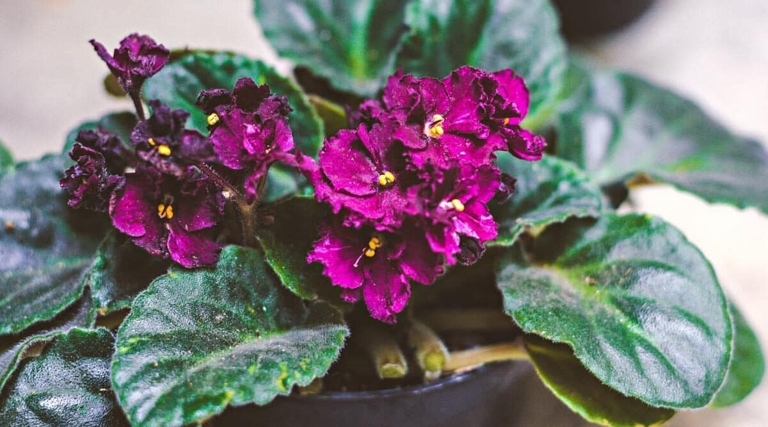
If that doesn’t work, you can use an insecticidal soap or neem oil. Be sure to follow the directions on the label and apply the product to the entire plant, including the undersides of the leaves. If you suspect your African violet has aphids, there are a few things you can do to get rid of them. First, try spraying the plant with water to dislodge the aphids.
How to Deal with African Violet Pests
Here are some tips on how to deal with African violet pests: African violets are one of the most popular houseplants, but they can be susceptible to pests.

This will prevent the pests from spreading to other plants. If you see any pests on your African violet, the first step is to isolate the plant.
Next, you’ll want to identify the pest. Common African violet pests include aphids, mealybugs, and whiteflies.
Be sure to follow the instructions on the pesticide label. Once you’ve identified the pest, you can treat it with an appropriate pesticide.
A professional can help you identify the pest and choose the best treatment option. If you’re having trouble getting rid of the pests, you may need to consult a professional.
[7] Improper Watering
If you’re an African violet fan, you know that these delicate flowers require some special care to stay healthy and bloom. Here are a few signs that your African violet is not getting the water it needs: One of the most important things you can do for your African violet is to water it properly.
1. The leaves are wilting or drooping.
The leaves are yellowing. 2.

3. The flowers are not blooming.
The soil is dry. 4.
If you see any of these signs, it’s time to give your African violet a good drink. Water the plant thoroughly, making sure to evenly moisten the soil. Avoid getting water on the leaves, as this can cause them to rot.
With proper watering, your African violet should soon be back to its healthy self.
How to Identify an Overwatered African Violet
The leaves of the plant will be wilted and droopy, and the soil will be soggy and waterlogged. If you suspect that your African violet is overwatered, there are a few telltale signs to look for. The leaves may also be yellow or brown, and the plant may be shedding leaves. If you see any of these signs, it’s important to take action to save your plant.
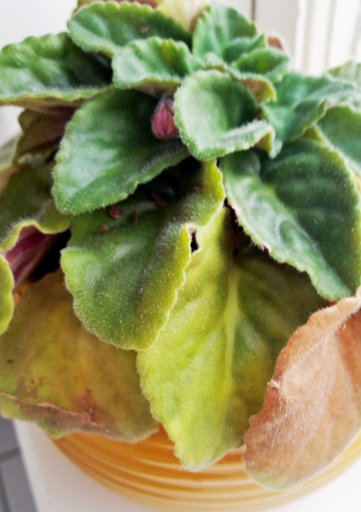
To revive an overwatered African violet, start by allowing the soil to dry out completely. Then, water the plant using a light hand, and be sure to allow the soil to drain thoroughly before putting the plant back in its pot. Once the plant is back in its pot, give it a light misting of water and place it in a bright, indirect light. With a little care, your African violet will be back to its healthy self in no time.
How to Identify an Underwatered African Violet
Here are a few ways to tell if your African Violet is underwatered: If you have an African Violet that is wilting, yellowing, or has brown spots on its leaves, it is likely that the plant is not getting enough water.
The leaves of the plant will be wilted and droopy. 1.

The leaves may also be yellowing or have brown spots. 2.
3. The soil of the plant will be dry and crumbly.
4. The plant will be overall wilted and droopy.
If you think your African Violet is underwatered, the best course of action is to water the plant thoroughly. Be sure to water the soil, not the leaves, and allow the plant to drain before putting it back in its pot.
How to Fix Watering Problems
One of the most important aspects of caring for an African violet is watering. If you’re an African violet enthusiast, you know that these delicate flowers require special care. Over-watering and under-watering are both common problems that can cause your African violet to die.
This will allow the plant to absorb only as much water as it needs. If you think you may be over-watering your African violet, the first step is to check the soil. If the soil is soggy or waterlogged, it’s a sign that you’re watering too much. Allow the soil to dry out completely before watering again. You can also try watering your African violet from the bottom by placing the pot in a saucer of water.
Water your African violet until the soil is evenly moist. You can also try misting the leaves of your plant to increase humidity. If you think you may be under-watering your African violet, the first step is to check the soil. If the soil is dry and crumbly, it’s a sign that you need to water more often.
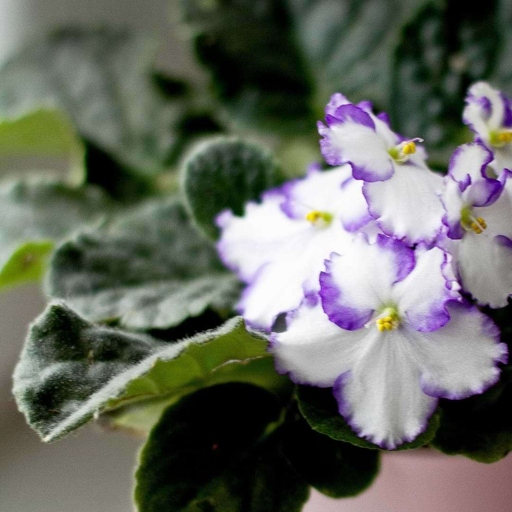
With a little trial and error, you’ll be able to find the perfect watering schedule for your African violet.
[8] Soil Issues – Incorrect Soil pH, Poor Drainage, etc.
The most common problems are incorrect soil pH, poor drainage, and not enough light. If your African violet is dying, there are a few things that could be going wrong.
African violets need soil that is slightly acidic, with a pH between 6.0 and 6.5. To test the pH of your soil, you can buy a testing kit at a garden center. If the soil pH is too high or too low, it can cause the leaves to turn yellow and the flowers to fall off.
African violets need well-draining soil that is moist but not soggy. If the soil doesn’t drain well, the roots can rot. To improve drainage, mix in some perlite or sand.

If your plant is not getting enough light, try moving it to a brighter spot. Finally, African violets need bright, indirect light. If they don’t get enough light, the leaves will start to turn pale.
How to Fix Soil Problems
Second, check the light. If it is soggy, let it dry out. If it is not getting enough light, move it to a brighter spot. Finally, check for pests. If it is dry, water it. African violets like it warm, so if it is too cold, move it to a warmer spot. If your African violet is dying, there are a few things you can do to revive it. African violets need bright, indirect light. If you see any pests, remove them. First, check the soil. Third, check the temperature.
How to Bring an African Violet Back to Life
If your African violet is wilting, its leaves are yellowing, or it just doesn’t seem to be thriving, don’t despair! There are a few simple things you can do to bring it back to life.
First, make sure you’re watering it correctly. African violets like to be kept moist, but not soggy. Water from the bottom, using a saucer or tray, and allow the water to soak up through the potting mix.
African violets need bright, indirect light. If it’s too dark, the leaves will start to yellow. If it’s too light, the leaves will scorch. Next, check the light.

African violets are heavy feeders and will benefit from a regular feeding with a African violet fertilizer. Finally, give it a little fertilizer.
With a little TLC, your African violet will soon be back to its beautiful best.
Frequently Asked Questions
1. What are the 8 signs of an African violet dying?
2. What are the causes of an African violet dying?
3. How can I revive my African violet?
4. What are some tips for preventing my African violet from dying?
5. Why did my African violet die?
1. The 8 signs of an African violet dying are: wilting leaves, yellowing leaves, browning leaves, dry leaves, no new growth, stunted growth, flowers falling off, and leaves dropping off.
2. The causes of an African violet dying can be due to too much or too little water, too much or too little light, too much or too little fertilizer, or pests.
3. To revive your African violet, you can try watering it, giving it more light, fertilizing it, or repotting it.
4. Some tips for preventing your African violet from dying are to water it regularly, give it bright but indirect light, fertilize it monthly, and keep it in a humid environment.
5. Your African violet may have died due to too much or too little water, too much or too little light, too much or too little fertilizer, pests, or disease.
Final thoughts
If your African violet is wilting, has yellow leaves, or is otherwise not looking its best, don’t despair. There are a few simple things you can do to revive it. With a little love and care, your African violet will be back to its beautiful self in no time.
